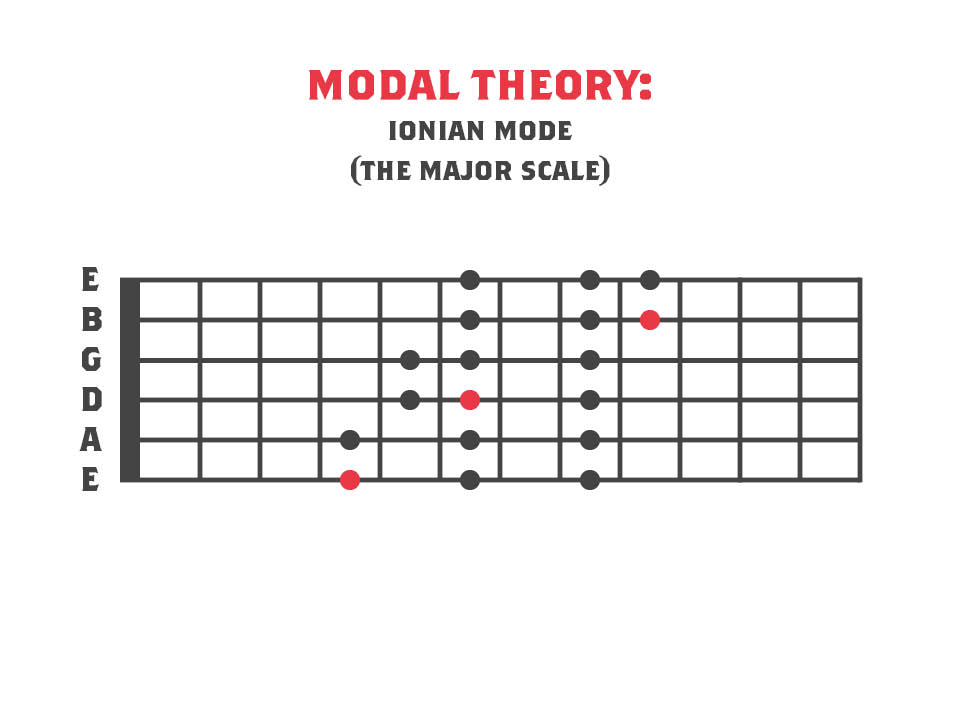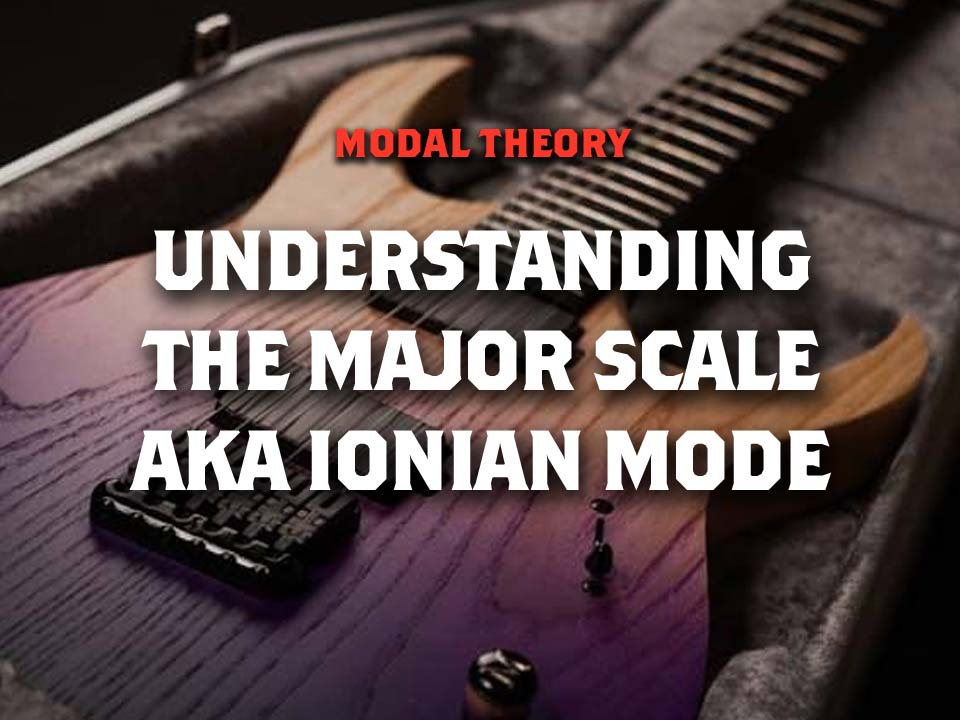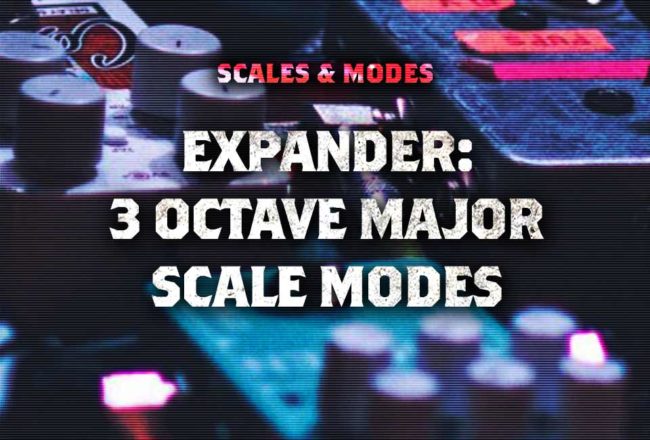In this series of lessons we will look at the modes of the Major Scale. We’ll learn how the modes relate to the major scale and look at when and how to use them.
Modes seem to be a source of confusion for a lot of people, especially the ‘self-taught’ guitarists among us. You’ll also often see modes of the major scale listed in books for reference but with little or no explanation of how to use them.
So what are the modes of the major scale?
A mode is basically the major scale, shifted along so that the ‘root’ note is different, for example in C major the second note is D. The second mode of the major scale is ‘Dorian’ so in C major we get the D Dorian mode. The notes of D Dorian are the same as C major except they run from D to C instead of C to B.
Let’s start by looking at the Major Scale itself:

Modes of The Major Scale
The first mode is called the Ionian mode, this is what you would normally refer to as “The Major Scale”. Pretty much all Western music can be related back to the major scale. The diagram above shows how to play the Ionian mode on a standard tuned 6 string guitar. Let’s start by playing from the 8th fret low E string. Since this is the note ‘C’ we get ‘C Major’. If we play the same pattern starting from a different note then we would name the scale from that note. For example moving the pattern up to the 12th fret would give us ‘E Major’.
Since C major is the easiest key to learn (It contains only ‘natural’ notes, no sharps or flats) I’ll list the notes of C major and it’s related modes, however remember that each fingering pattern can be moved up or down the fretboard so you can play in any key.
Below is an example of C Ionian over 1 octave ascending and then descending. The second example is a melody in C Major played over the chords C major, G major and D minor (All from the Key of C Major)
Building The Modes
If we start on D but play the same notes as C Major we get the second mode of the major scale, Dorian. The third mode is Phrygian, the fourth is Lydian, the fifth is Mixolydian, the sixth is Aeolian (Also called the Natural minor scale) and the seventh is Locrian mode.
In C Major the modes would be as follows:
C Ionian: C-D-E-F-G-A-B-C
D Dorian: D-E-F-G-A-B-C-D
E Phrygian: E-F-G-A-B-C-D-E
F Lydian: F-G-A-B-C-D-E-F
G Mixolydian: G-A-B-C-D-E-F-G
A Aeolian: A-B-C-D-E-F-G-A
B Locrian: B-C-D-E-F-G-A-B
Major Scale Intervals
The Major scale is built using a pre-determined series of intervals. Knowing this series of intervals means you can work out the notes of the Major scale in any key. Often you’ll see these intervals listed as ‘W’ and ‘H’ which stand for Whole Step and Half Step. The order is as follows:
W – W – H – W – W – W – H
I usually use the terms ‘Tone’ and ‘semi-tone’ and write it as:
T – T – S – T – T – T – S
Either way is fine to use as long as you know the distance between the notes, so lets look at an example or two:
We start with the Root note, or ‘Tonic’ of the key and then apply the above series of intervals. Below is a list of all 12 notes so you can see the distance between them (C to C# would be a semi-tone or half step. C to D would be a Tone or Whole Step)
A – A# – B – C – C# – D – D# – E – F – F# – G – G# – A
You can also name each of the sharp notes after the next letter alphabetically with a flat symbol. For example you can also refer to A# as Bb (B flat) and C# can be called Db and so on, depending on context. This is to do with how musical notation is written and will be explained in more detail in a future post.
Major Scales Compared
If we start with C as our Tonic and apply the above series of intervals we get:
C – D – E – F – G – A – B – C
Notice that a semi-tone up from E gives us F since there is no E# and likewise a semi-tone up from B gives us C since there is no B#.
If we do the same with the note Ab (A flat) we get:
Ab – Bb – C – Db – Eb – F – G – Ab
The reason I called the Tonic Ab and not G# is that we want one of each letter but if we use sharps we would get:
G# – A# – C – C# – D# – F – G – G#
This gives us two C’s and two G’s and no B note. This is undesirable because it will cause confusion into what each of these double notes refer to. For now just know that we want to avoid naming the notes of the Key we’re in with two of the same letter. I’ll explain this in in more detail in another post.
Now that you know how to form a major scale in any key and you know how to play the major scale from the diagram at the top of the page we can move on to look at each mode of the major scale in turn.














2 Comments
[…] get them to sit under your fingers. Quite often you’ll see that players like to refer to an already familiar shape with simple modifications. I personally prefer to think of each set of modes having their own […]
[…] learn how to work out the notes of the major scale, check out this post from our modal theory […]